The power of soil pH and why it matters
What is soil pH, why it matters, and how to test soil pH
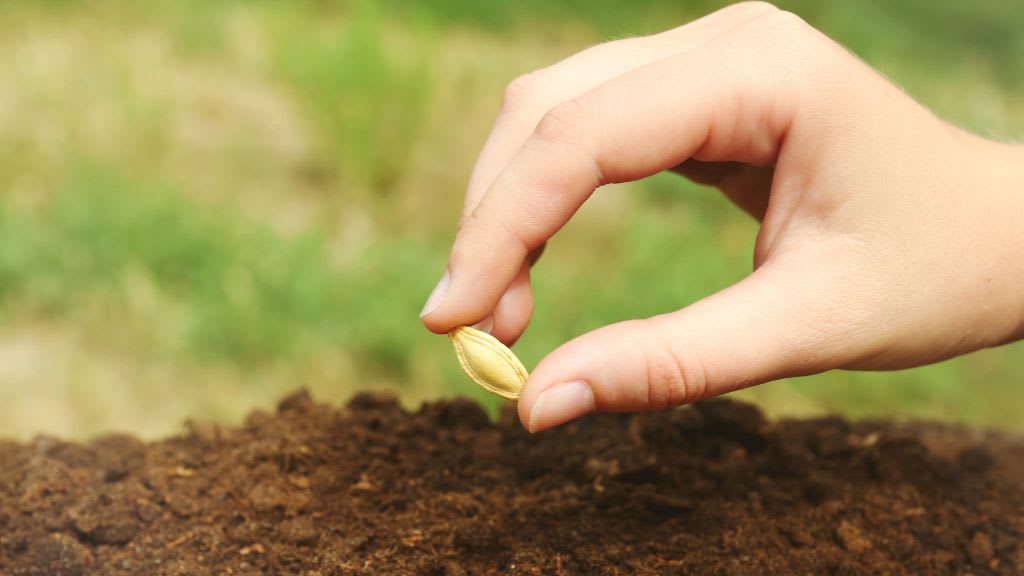
Soil pH (or acidity) is crucial to any successful garden. Yet many people are unaware of just how much of a role your soil pH has in helping to improve your garden. For those unaware, here’s all about the power of soil pH and why it matters.
What is soil pH?
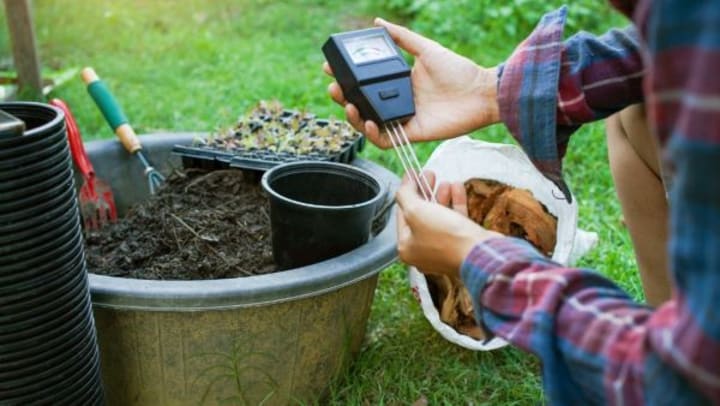
Soil pH is a measure of your soil’s acidity. A logarithmic scale called the pH scale measures the soil's acidity. The extent of soil acidity is measured using a number of 1 for acidic and 14 for alkaline (or basicity). The middle of the scale, 7, is considered neutral.
The higher the pH number above 7, the stronger the alkalinity of the soil. In contrast, the lower the pH number below 7, the stronger the soil's acidity. The concentration of hydrogen ions present is what affects the pH. An acidic pH has a much higher concentration of hydrogen ions.
In the UK, most soil sits between the neutral and slightly acidic pH ranges. However, limestone or chalk-rich areas will experience alkaline soil. The type of soil can also affect soil acidity. For example, clay and sandy soils have a naturally neutral pH level.
What affects soil pH?
One of the reasons why many people are unaware of the effect of soil pH in the garden is because any changes often happen unknowingly. Several factors affect soil pH, many of which occur naturally.
Here are several factors that affect soil pH levels and whether they increase the acidity or basicity of the soil:
- Acid precipitation resulting from acid rain (acidity).
- Adding Carbonate, silicate, or aluminosilicate minerals (basicity).
- Certain farming practices, such as intense agricultural (acidity).
- Using water with dissolved bicarbonates (basicity).
- Use of chemical fertilisers, particularly ammonium-based fertilisers (acidity).
- Weathering of carbonate, silicate, or aluminosilicate minerals (basicity).
- Root respiration and decomposition of organic matter, such as plant residue (acidity).
Why does soil pH matter?
Now that we’ve covered what soil pH is and the factors that affect pH levels, it’s time to explore why it matters. There are several reasons why it’s important to consider, monitor, and test your soil’s pH levels.
Chlorosis
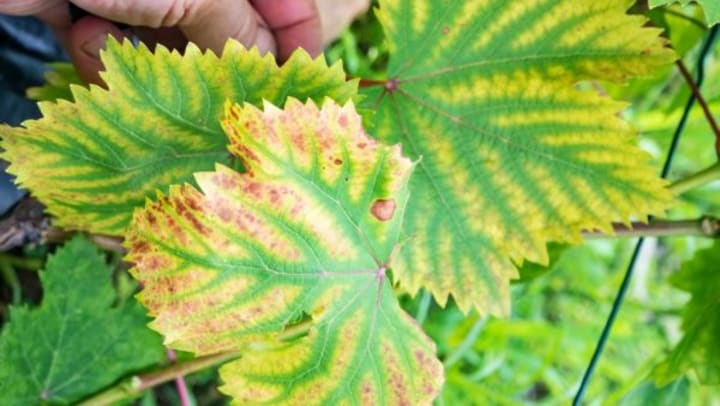
The first reason soil pH matters is that it can cause the yellowing of plant foliage, or chlorosis. There are many causes of the yellowing of plant leaves. However, one of the most prevalent causes is the wrong pH.
In particular, Iron Chlorosis causes yellow leaves due to iron deficiency from a high pH level. Many other nutrient deficiencies, including nitrogen, magnesium, and boron, can affect plants. Find out more about nutrient deficiencies.
Nutrient absorption
Another reason soil pH matters is that it can affect plant growth. That’s because soil acidity affects the nutrient absorbency in the soil. Soil acidity that’s too high or low decreases the availability of specific nutrients. As a result, plant growth is affected.
Here’s a diagram that showcases nutrient availability at different soil acidity levels:
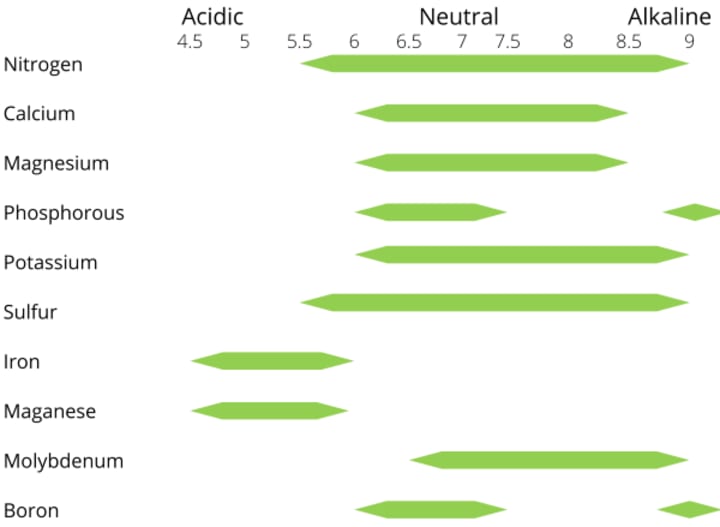
Certain plants also favour different pH levels. Choosing the plants to match your current soil pH levels is recommended instead of changing pH levels. You should also adjust soil pH levels if the acidic or basicity levels are high.
Ericaceous and calcifuge plants prefer acidic soil, while calcicole plants prefer alkaline soil conditions.
Some plants best suited for acidic soil include:
- Azaleas
- Blueberry
- Camellia
- Heathers
- Lilies
- Magnolia
- Pieris
- Rhododendrons
Some plants best suited for alkaline soil include:
- Ash trees
- Clematis
- Honeysuckle
- Lavender
- Lilacs
- Phacelia
- Polemoniums
- Syringa
Microbial activity

The effect on microbial activity in the soil is another reason why soil pH matters. Microbial activity refers to the microbiological processes that take place in the soil. Plants rely on microbial activity from microorganisms for organic nutrient mineralisation.
For microorganisms to effectively work and carry out microbial processes necessary for healthy soil, they require an optimum pH level. Typically, the best pH level for most soil bacteria (or neutrophiles) is around the neutral ranges (6-8).
However, this is different depending on the type of bacteria. Acidophilus is a bacteria suited for acid conditions and prefers an acidity of around 3. In contrast, Alkaliphiles are bacteria suited for basicity conditions and prefer an acidity of about 9.
Plant diseases
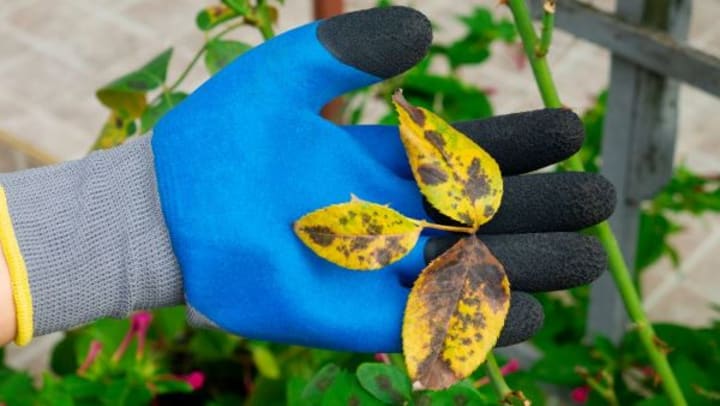
One more reason why soil pH matters is the effect it has on plant diseases. It can also affect how well your plants can build up a natural resistance to diseases. Firstly, for plants to build natural resistance, they require sufficient sunlight, nutrients, and water.
Nutrient deficiency caused by a high or low soil pH can make your plant more vulnerable to diseases. Ensuring a suitable soil pH to ensure nutrient availability will help give your plant extra resistance to diseases, such as block spots or mildew.
Some diseases can also be prevented with the right soil pH levels. For those growing Crucifers in the vegetable garden (such as cauliflowers and turnips), Clubroot can be a problem. However, a soil pH of 7 or higher can help control the disease for healthy crops.
How can you test soil acidity?
If you experience any of the abovementioned problems, it may be time to test your soil acidity levels. Fortunately, there are a few easy and simple ways you can do this. Let’s briefly cover the different methods and how they work.
Soil pH meter
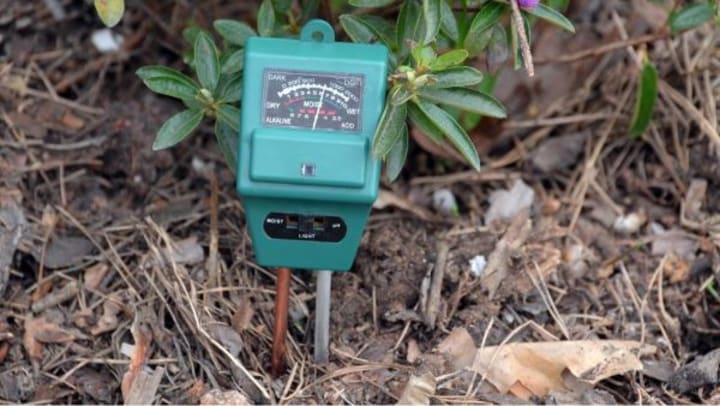
The first method you can use for testing the soil pH is a meter. Soil pH meters are small devices designed to give an accurate soil pH testing method. Compared to other methods, these meters can work with all soil types, including clay soil, to accurately measure pH.
Sometimes, a soil pH meter may also come with additional monitoring or measuring functions. For example, a 3-in-1 soil pH meter measures soil pH, moisture, and light levels. This helps make maintaining a healthy garden much easier.
To measure soil pH using a soil pH meter, you only need to insert the probes into the soil and choose the meter function you want. After a brief moment, the device will provide you with an accurate pH reading. After use, clean the probes to prevent any damage or corrosion.
This helps to extend the lifespan of the monitor. A quality soil meter will provide a near-accurate reading of up to 0.1%. Typically, these devices require no calibration or setting up. Most quality meters will not require batteries and instead naturally source power.
Check out the answers to these popular soil pH meter questions
pH test kits
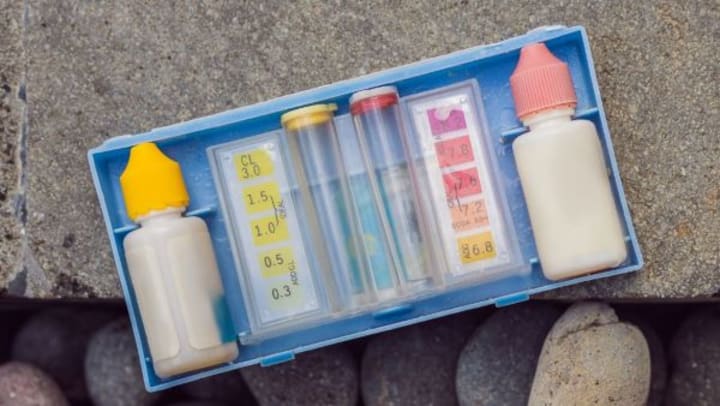
Another method of measuring soil acidity levels is using a pH test kit. While these don’t provide an accurate reading like a soil pH meter, they still give you a clear idea of your soil pH levels. There’s also a bit more chemistry involved with this method too.
A pH test kit usually contains a colour chart (the pH scale), a test tube, and a testing solution. All you need to do is source a soil sample free from debris (ideally around 6-8 inches below the surface) and mix it with the recommended testing solution inside the test tube.
Give it a good shake and wait for the magic to work. Watch as the colour of the solution changes depending on the acidity levels. The solution will turn red for acidic soils, whereas alkaline soils will appear purple. Compare against the chart for a rough estimate.
Litmus paper
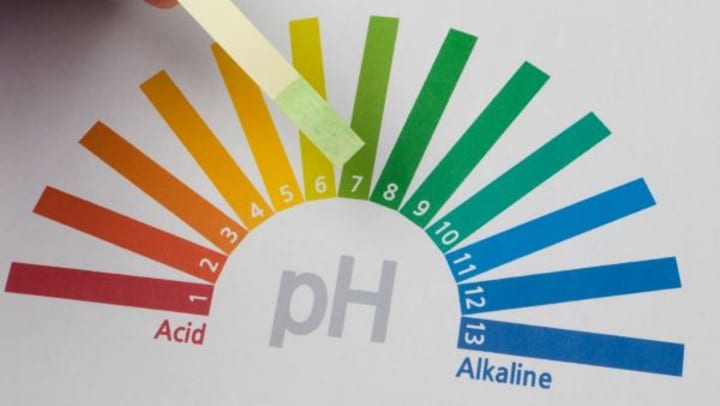
Using litmus paper is another method for measuring soil acidity levels. While similar to the pH test kit, this method is the least precise. The major difference is using litmus paper instead of a testing solution.
The litmus paper is specially designed to change colour depending on the pH level of a liquid. Using a clean soil sample from around 6-8 inches below the surface, mix it with a small amount of water and shake well.
Then, take the litmus paper and dip it into the soil solution. The paper will then change colour accordingly. Match up against a colour chart for a rough estimate of your soil pH level.
Soil pH is a crucial factor for any successful garden that has the power to affect plant growth. With so many reasons why plant growth matters, now is the perfect time to get a testing method and discover your garden’s soil pH level. That way, you can plan and prepare ready in time for planting.
About the Creator
Enjoyed the story? Support the Creator.
Subscribe for free to receive all their stories in your feed. You could also pledge your support or give them a one-off tip, letting them know you appreciate their work.





Comments
There are no comments for this story
Be the first to respond and start the conversation.